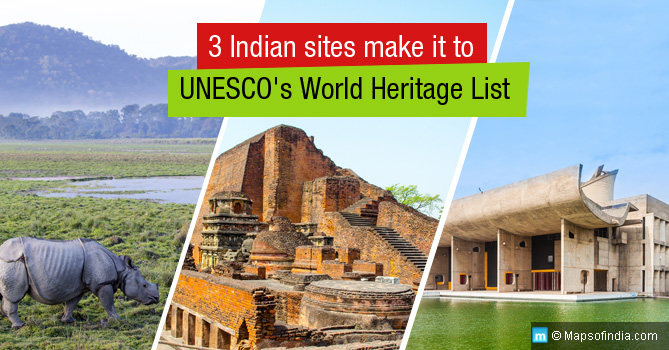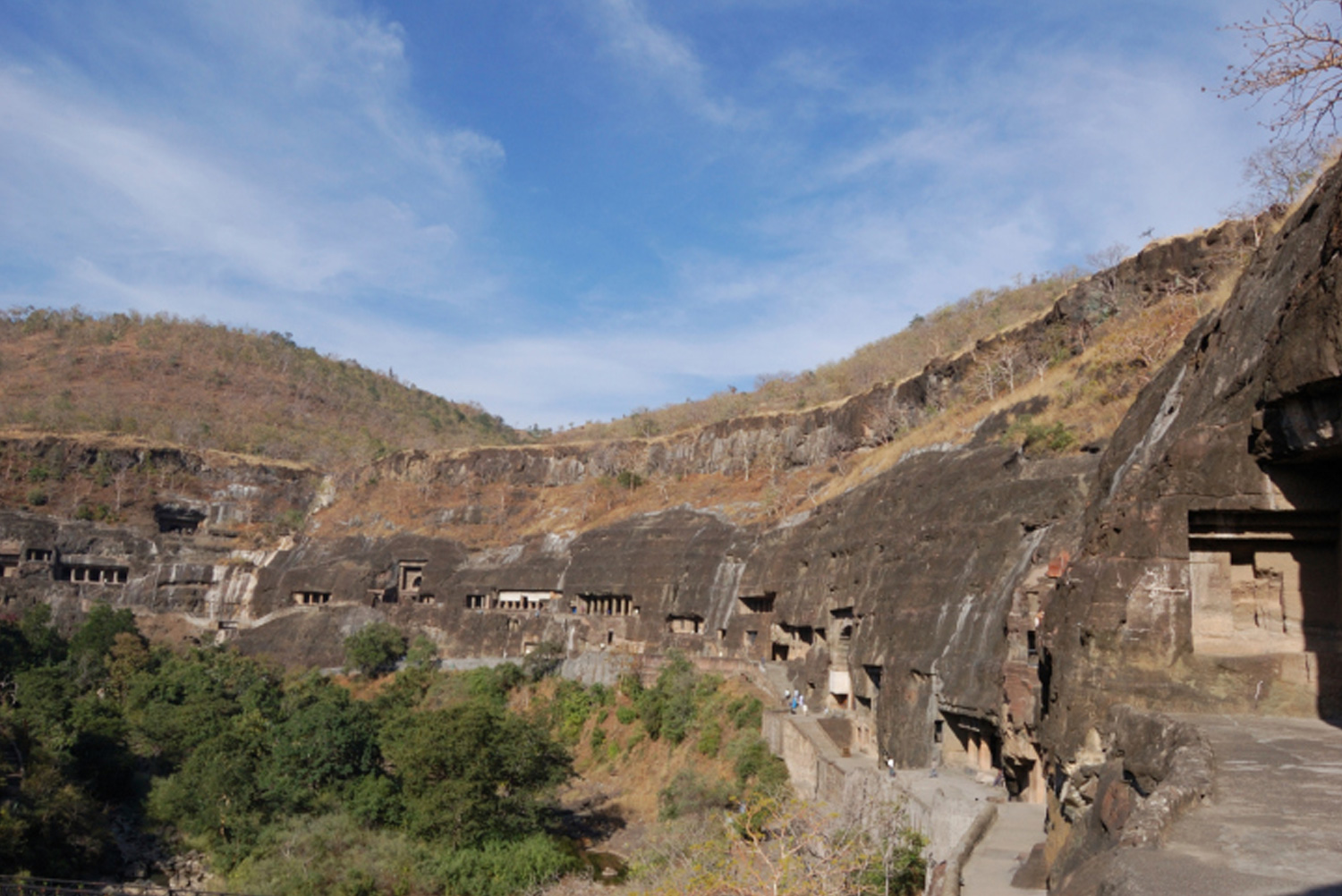The World Heritage Committee (WHC) of UNESCO has included 3 sites from India in the list of World Heritage Sites of the world. This is a major honour for India. One of these sites is the Khangchendzonga National Park – KNP – of Sikkim. The two other sites are in Chandigarh and Bihar. The announcements were made during WHC’s 40th session, which was organized recently at Istanbul, Turkey, reeling presently from the effects of the failed coup that has already claimed at least 260 lives. The session had started on 10th July and had to be reduced by four days because of the situation in Turkey.
Nalanda University
Nalanda University – also known nowadays as Nalanda Mahavihara – was already earmarked as a heritage site of archaeological importance. It received the honour a couple of days before the other two. In case of Chandigarh, the honour of a World Heritage Site has been conferred on the Capitol Complex. In fact, all these had been nominated in the recently-concluded session. This is probably a rare instance as well. In fact, an officer of the union culture ministry has stated that this is also the first occasion that any particular country has seen three sites make it to the prestigious list at one go.
India’s World Heritage Sites
Inclusion of the aforementioned sites also makes it 35 sites for India. Of the 35 sites of India, 27 are of cultural importance and 7 are natural sites. A World Heritage Site is basically one that, according to UNESCO, is physically or culturally significant. WHC was formed during 1977 in order to implement World Heritage Convention.
Must Read: World Heritage Sites in India
KNP (Khangchendzonga National Park)
KNP can be regarded as the first Indian site of mixed heritage to have made it to the list. A mixed site is one which is significant culturally as well as naturally. As revealed by VE Mathur, who is the director of Wildlife Institute of India as well as UNESCO centre functional at the same institute, it received this honour after it was successful in satisfying the nomination criteria.
As far as protected areas around the world are concerned, the park has one of the biggest altitudinal spans. It is a uniquely-diverse area with lowlands, mountains full of snow, and sharp valleys. It also has Mount Khangchendzonga, which is the third highest peak of the world, apart from several glaciers, and lakes. The forests over here are age old. It comprises 1/4th of Sikkim, the state it is located in. In fact it is located right in the midst of the state.
The park has several animal and plant species that belong to different categories such as endemic, threatened, and rare. It also has plenty of mammal and bird species. One can find cultural and religious practices of Buddhism over here and as may be evident it is ecologically significant as well. It can be regarded as an exceptional instance of environmental preservation and traditional knowledge. It is also supposed to be one of the few examples where various people and religious traditions have come together and have existed together harmoniously and also been involved in frequent cultural exchanges.
In fact, the official statement regarding the park also states that there are several mythological narratives surrounding the same. The statement also revealed that the people here worship the various abundant natural elements and the stories – with their holy meanings – have mingled nicely with Buddhism to form the base of Sikkimese identity as it is known today. As evident from Twitter, Ruchira Kamboj – the Indian ambassador to UNESCO – was ecstatic at KNP’s selection. She also tagged UNESCO and the director-general of UNESCO, Irina Bokova, in her tweet.
Capitol Complex of Chandigarh
Chandigarh’s Capitol Complex is famed and includes prominent buildings such as Legislative Assembly, High Court, and Secretariat. It was designed by Le Corbusier, a noted architect from France in 1950s as a symbol of India that had become independent and was now looking to start on its path to achieving modernity. According to Parimal Rai, who is an adviser to Chandigarh administration, it was a moment of major pride for the city. He also stated that the union territory administration will make all possible efforts to make sure that the World Heritage Site is preserved and conserved in all its glory. They are also looking at making Chandigarh a major destination for international tourists. The culture ministry of India tweeted its happiness at the selection of the Capitol Complex.
This complex is one of the 17 sites that were designed by Corbusier, who is actually known as Charles-Edouard Jeanneret-Gris, in 7 countries such as the following:
- France
- Switzerland
- Belgium
- Germany
- Argentina
- Japan
- India
All the 17 sites in question are said to have represented a major shift in the architectural patterns of the day. All of them represented the solutions that Modern Movement – of which these buildings are parts – attempted to use so that fresh architectural techniques could be created. In this case the main aim was to create styles and patterns that would be at par with requirements of the society during the 20th century. Apart from Chandigarh’s Capitol Complex, the National Museum of Western Art in Tokyo, Unite d’habitation in Marseille, France, and the House of Dr Curutchet in La Plata, Argentina are some prominent names in this regard. As per an official statement, all of them prove that at the time of their construction there was an attempt to create an international style of architecture around the world.
Other additions from around the world
The elite list also features Pampulha Modern Ensemble from Brazil and Antigua Naval Dockyard and Related Archaeological Sites from Antigua and Barbuda. In all, 27 places were on the list but only 21 of them were given the green signal by UNESCO. Among the 21 new sites, 12 are of cultural importance, 3 are of mixed heritage, and 6 are naturally significant. This makes it 1052 sites spread across 165 countries. During the said session, UNESCO also looked at the condition of 155 sites. In all, 7 were included in List of World Heritage Sites in Danger. 5 of them are from Libya, and there are one each from Mali and Uzbekistan. One site from Georgia was also removed from the abovementioned list. Nan Madol, also known as Ceremonial Centre of Eastern Micronesia, was included in both the dangers list as well as the main list. The 41st session is supposed to be organized at Krakow, Poland during July 2017.
Read More:
Humayun’s Tomb
Qutb Minar and its Monuments
Dilli ka Lal Qila
Champaner-Pavagadh Archaeological Park
Group of Monuments at Pattadakal
Khajuraho Group of Monuments
Ajanta Caves
Elephanta Caves
Chhatrapati Shivaji Terminus
Konark Sun Temple
Jantar Mantar
Great Living Chola Temples
Agra Fort
Fatehpur Sikri
Taj Mahal
Mountain Railways of India
Nanda Devi and Valley of Flowers National Parks
Sundarbans
Western Ghats
Hill Forts of Rajasthan





